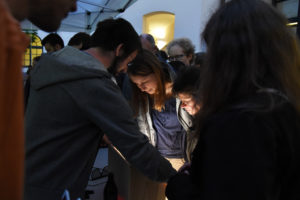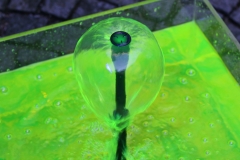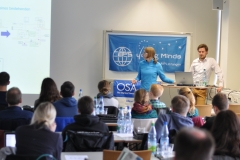“Blue Night” is an annual cultural event in the city of Nuremberg, during which local representatives from science and art present their work to the broad public. The hbar omega Young Minds section in Erlangen supported by the Max Planck Institute for the Science of Light (MPL) hosted a presentation space at this event in the inner city of Nuremberg. The topic of this year’s event was “Odyssey”, which allowed the presenting scientists to tell about the long journey that optics has undertaken from the first observations centuries ago up until today’s age of modern and quantum optics.
is an annual cultural event in the city of Nuremberg, during which local representatives from science and art present their work to the broad public. The hbar omega Young Minds section in Erlangen supported by the Max Planck Institute for the Science of Light (MPL) hosted a presentation space at this event in the inner city of Nuremberg. The topic of this year’s event was “Odyssey”, which allowed the presenting scientists to tell about the long journey that optics has undertaken from the first observations centuries ago up until today’s age of modern and quantum optics.
The section presented a number of tutorial experiments to the visitors covering physical effects such as diffraction, polarization effects, total internal reflection, coupled oscillations, quantum noise, holography, and acoustics. Additionally, researchers from the MPL and members of the Young Minds section gave short presentations on optical forces, high resolution microscopy, acoustics, and quantum optics giving insights in current research topics at the MPL.
There was a continuous stream of over 1000 excited visitors of all ages and educational levels during the whole evening, revealing a huge interest of people in modern optical science. All this made this event a great success making both fundamental optical phenomena as well as current research accessible to the broad public.



